Blog » Travel Guides » The Ultimate Vietna...
The Ultimate Vietnam Travel Itinerary Guide 2025: Tailored Trips for Every Traveler
This comprehensive 2025 guide provides expertly tailored Vietnam travel itineraries for all traveler types and trip lengths, blending iconic destinations with authentic local experiences. It offers practical planning tips, seasonal insights, and cultural highlights to help you confidently customize your perfect Vietnam journey.
Key Takeaways
- You can tailor your Vietnam trip from a short visit focusing on one region to a multi-week itinerary covering North, Central, and South Vietnam’s diverse cultural and natural highlights.
- The best time to visit varies by region: October to April for the North, February to August for Central Vietnam, and December to April for the South, helping you plan activities around seasonal weather.
- Vietnam offers a wide range of transport options, including domestic flights, scenic trains, and buses, with early bookings recommended to avoid peak-season price hikes and availability issues.
- Popular Vietnamese dishes such as phở, bánh mì, and bánh xèo reflect regional flavors and are best experienced through local street food tours and markets.
- Staying safe includes using reputable transport, securing valuables against pickpocketing, drinking bottled water, having travel insurance, and being mindful of common scams like fake taxis and overcharging.
Planning your perfect adventure in Vietnam just got a whole lot easier with this Vietnam travel itinerary guide for 2025.
Whether you’re visiting for a few days or several weeks, this ultimate guide helps you craft a trip that fits your style—whether that’s culture, nature, food, or family fun.
From the lively streets of Hanoi up north to the ancient charm of Hoi An in central Vietnam, and the vibrant buzz of Ho Chi Minh City down south, there’s something here for every kind of traveler.
Inside, you’ll find detailed plans for each region, tips on tailoring your trip length, advice on visas, transportation, and places to stay, plus must-see landmarks and hidden gems.
We’ll also cover seasonal weather, safety tips, and food experiences to make your journey richer.
Get ready to explore Vietnam with confidence using a flexible itinerary that blends iconic sights, deep culture, and unforgettable landscapes.
Introduction to Your Vietnam Travel Itinerary

Who This Guide Is For
This guide is perfect for travelers looking for a well-organized yet flexible Vietnam travel itinerary that works whether you have just a short visit or a longer trip.
Whether it’s your first time, a return visit, or you’re traveling with family, this resource will help you plan your trip independently and confidently.
Ideal for:
- Independent explorers who prefer crafting their own adventure instead of booking package tours.
- Backpackers and families who want clear, easy-to-follow travel plans.
- Culture and food lovers eager to dive into genuine local experiences.
- Anyone needing practical tips on visas, transport, and accommodations.
- Those with flexible schedules—from a few days to over a month—looking to tailor their trip.
Overview of Key Regions: North, Central, and South Vietnam
Vietnam breaks down into three main regions, each giving a unique flavor that shapes your itinerary and enriches your experience.
| Region | Main Cities/Sites | Signature Experiences |
|---|---|---|
| North Vietnam | Hanoi, Sapa, Ha Long Bay | Historic Old Quarter, mountain trekking, UNESCO World Heritage bay cruises |
| Central Vietnam | Hue, Hoi An, Da Nang | Imperial heritage, lantern-lit ancient towns, beaches, traditional crafts |
| South Vietnam | Ho Chi Minh City, Mekong Delta, Phu Quoc | Vibrant city life, river cruises, island retreats |
This regional breakdown helps you zero in on the experiences you value most, blending culture, nature, and city energy across Vietnam’s diverse landscapes to make each trip uniquely yours.
How to Use This Vietnam Travel Itinerary Guide
To get the best from this guide, start by picking your arrival city—usually Hanoi in the north or Ho Chi Minh City in the south. From there, follow regional suggestions to build a route that suits your interests and time frame.
- Adjust your itinerary length depending on whether you’re planning a quick getaway or a deeper dive.
- Use the tips on visas, flights, local transport, and accommodation to make logistics smoother.
- Mix famous destinations with lesser-known spots for a more balanced and unique trip.
- Refer to advice on safety, saving money, and cultural insights to make your experience even better.
Following these steps will turn your travel plans into a clear and enjoyable roadmap to discover Vietnam’s rich heritage and lively lifestyle.
Planning Your Vietnam Trip: Essential Steps

Choosing Trip Duration and Travel Style
If you’re traveling for the first time or with family, Vietnam’s diversity means you can shape your trip based on what you’re into and how much time you have.
Most visitors spend 10 to 21 days exploring highlights like Hanoi, Ha Long Bay, and Sapa up north; Hue and Hoi An in central Vietnam; plus Ho Chi Minh City and the Mekong Delta down south.
Short trips (7–10 days) work best if you focus on either the north or the south/central region alone.
Longer trips allow hopping around Vietnam by train, bus, or domestic flights, giving a fuller taste of the country’s landscapes and cultures.
Your travel style might range from adventure (trekking in Sapa, kayaking in Ha Long Bay) and culinary tours to cultural immersion in ancient towns and bustling markets. Guided tours can simplify things, especially with kids or limited time.
Pro tip: Book transportation and accommodation ahead to avoid last-minute stress, especially during busy seasons like Tet Holiday and summer.
Visa Requirements and Entry Tips
Most travelers need a visa before visiting Vietnam. The e-visa is usually the easiest option, valid for 30 days and available online for many nationalities (check our guide : Comprehensive 2025 Guide to Vietnam Travel Visa: Types, Application & Tips)
Visa on arrival is another choice but requires pre-approval and only works if you arrive by plane. Some countries get visa exemptions for short trips—check the latest before you book.
Entry tips: Apply early, carry printed visa approval letters and confirmations for travel and hotels, and make sure your passport’s valid for at least six months. Immigration checks can be thorough, so have your documents ready.
Budget Planning and Money Tips
Vietnam gives great value for travelers. On a tight budget, expect to spend $30–$50 a day per person, while mid-range trips run $50–$150.
Cash in Vietnamese Dong (VND) is king, especially at markets and small shops. ATMs are common in cities, but watch out for fees and notify your bank before traveling.
Bargaining is normal in markets but not supermarkets. Tipping is nice but not required—usually modest and mainly for service.
Safety tip: Keep your cash spread out, don’t flash large bills, and watch for common tourist scams.
Packing Essentials for Vietnam
Pack smart for Vietnam’s tropical climate and your planned activities. Don’t forget:
- Light, breathable clothes, and modest options for temple visits.
- Rain gear like ponchos or small umbrellas for sudden showers.
- Comfortable shoes and sandals for walking and beaches.
- Sunscreen, insect repellent, and a refillable water bottle.
- Travel adapters for Vietnam’s power outlets (types A, C, D) and a basic first aid kit.
- For families: diapers, medicines for kids, snacks, and comfort items to ease travel.
Luggage tip: Soft-sided bags are easier to carry, especially where elevators or smooth roads are missing.
Health and Safety Considerations
Vietnam is generally safe but use common sense. Make sure you have travel insurance that covers medical emergencies.
Stay updated on vaccinations, and think about Hepatitis A and Typhoid shots if heading to rural areas.
Drink only bottled or purified water. When trying street food, pick busy stalls with good hygiene.
Traffic can be wild, so always hold kids’ hands and prefer taxis or ride-hailing instead of walking long distances in busy cities.
Keep your valuables secure, avoid illegal taxis, and learn about common scams.
Watch weather warnings and save local emergency numbers (police: 113, ambulance: 115) on your phone.
Being prepared helps you enjoy Vietnam’s culture and stunning landscapes safely and relaxed.
Best Time to Visit Vietnam: Seasonal and Weather Guide
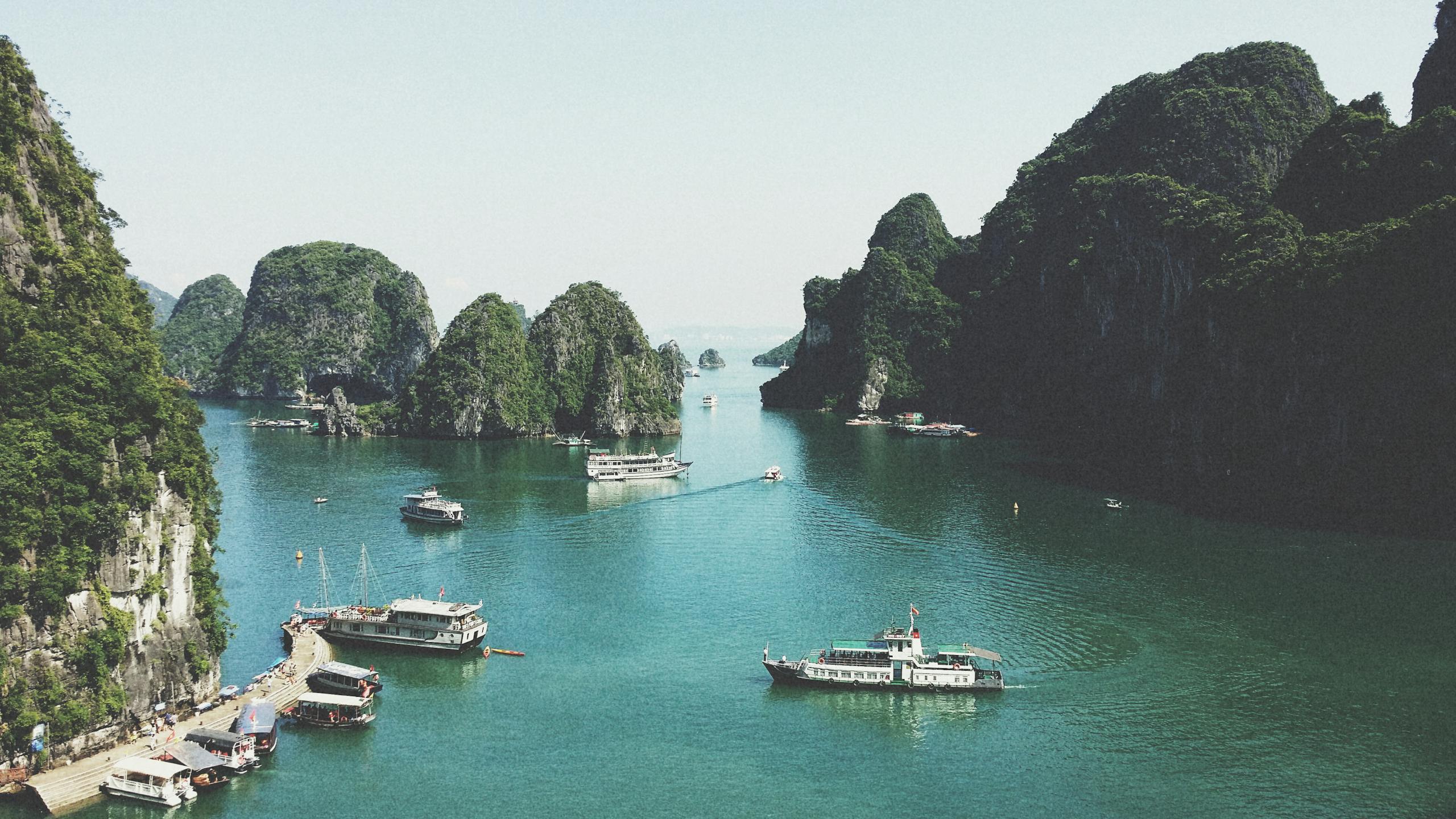
Understanding Vietnam’s Climate Zones
Vietnam’s climate varies a lot across regions. North Vietnam (Hanoi, Sapa, Ha Long Bay) has four seasons, with cool winters and hot, humid summers. Central Vietnam (Hue, Da Nang, Nha Trang) has a rainy season from September to December and dry from January to August. South Vietnam (Ho Chi Minh City, Mekong Delta) experiences a tropical monsoon climate with dry, warm months from December to April and rainy season May to November.
Peak and Off-Peak Travel Seasons
Peak times differ by region, helping you plan to avoid crowds and bad weather. Northern Vietnam’s peak is October to April, with cool, dry weather great for sightseeing and trekking. Central Vietnam is best from February to August—perfect for beaches and cultural tours. Southern Vietnam’s dry season runs December to April, ideal for city exploring and river trips.
The off-peak months bring heat, rain, or typhoons: northern Vietnam June to September, central Vietnam September to December, and southern Vietnam May to November. These months mean more rain and fewer tourists, which some travelers prefer.
How Seasons Affect Activities and Destinations
The time of year shapes what you’ll want to do. Hiking in Sapa and Ha Giang is best in autumn (September to November) and spring (March to May). Beaches in central Vietnam shine between February and August, while southern beaches are great from December to April. Cultural spots in Hanoi, Hue, or Hoi An are nicest in the cooler dry months. Mekong Delta river trips go smoother in the dry season with less flooding.
Tips for Booking Around Weather Patterns
- Book early if you’re traveling during peak months to get top spots and better prices.
- Keep an eye on weather forecasts in transitional seasons to stay flexible and dodge storms.
- Be cautious in rainy or typhoon seasons and check cancellation policies before booking.
- Consider travel insurance that covers weather disruptions, especially if traveling off-peak.
Timing your trip to fit Vietnam’s seasons means you’ll enjoy nice weather, fun activities, and fewer crowds.
North Vietnam Itinerary Highlights

Exploring Hanoi: Cultural and Historic Sites
Hanoi buzzes with culture, history, and lively street scenes. Roam the Old Quarter, a maze of streets filled with colonial buildings, artisan shops, and busy markets. Visit the Temple of Literature, Vietnam’s first university, where you can soak in centuries-old scholarly vibes among peaceful gardens. Don’t miss Hoan Kiem Lake and the Ngoc Son Temple nearby—great spots for morning or evening walks with locals.
Dive deeper into history at the Ho Chi Minh Mausoleum, the iconic One Pillar Pagoda, and the Hoa Lo Prison Museum, which tells stories of colonial times and war. For more cultural insight, check out the Vietnam Women’s Museum and National Museum of Vietnamese History. Round it off by tasting Hanoi’s famous street foods like pho, bun cha, and egg coffee to really get the city’s flavors.
Ha Long Bay Cruises and Boat Tours
A top highlight in the north is an overnight cruise on traditional wooden junks drifting among the striking limestone karsts of Ha Long Bay, a UNESCO World Heritage Site. Most cruises offer activities like kayaking, swimming, and visits to floating fishing villages. For a quieter vibe, explore Cat Ba Island where you can combine boat trips with hiking and biking through lush scenery.
Kayaking through hidden lagoons and exploring caves adds to the adventure, while watching the sunrise and sunset over the bay leaves unforgettable memories.
Trekking and Nature Experiences in Sapa
Sapa draws trekkers with its stunning terraced rice fields and ethnic minority villages, home to groups like the Black Hmong and Red Dao. Guided hikes range from easy strolls to tougher routes, with options to stay in homestays for an authentic cultural experience. The highest peak in Indochina, Fansipan Mountain, offers a thrilling climb, though many take the cable car to enjoy the views without the effort.
Weekend markets burst with colorful local crafts and fresh produce. Nearby natural spots like the Silver Waterfall and Love Waterfall make great refreshment stops during your trek.
Ninh Binh and the ‘Halong Bay on Land’
Known as “Halong Bay on land,” Ninh Binh captivates with towering karst cliffs, winding rivers, and ancient temples. The Trang An Boat Tour glides through a UNESCO-listed scenery of caves and waterways—an absolute must for nature lovers.
The gentle Tam Coc boat ride floats past rice paddies, especially stunning during harvest time. Hiking up to Mua Cave Viewpoint rewards you with sweeping views over the countryside. The huge Bai Dinh Pagoda and the ancient capital ruins at Hoa Lu add historical depth, set amid charming rural landscapes.
Hidden Gems and Local Experiences in the North
If you’re after off-the-beaten-path adventures, the Ha Giang Loop offers an exciting motorbike ride through some of Vietnam’s wildest and most scenic mountains, far from the crowds. The peaceful Ba Be Lake and stunning Ban Gioc Waterfall showcase spectacular natural beauty, with opportunities for kayaking and exploring caves.
Mai Chau Valley invites you to cycle through rice fields and stay in traditional Thai stilt houses, often including cooking experiences. Homestays around Sapa, Mai Chau, and Ba Be offer genuine cultural exchanges that deepen your trip.
Spring and winter months bring the best light and clear skies, perfect for photographers looking to capture Northern Vietnam’s dramatic landscapes.
Suggested North Vietnam Itinerary Duration
- 2-3 days in Hanoi to dive into culture and city life
- 2 days in Ninh Binh for nature and history
- 2-3 days trekking and homestays in Sapa or motorbiking the Ha Giang Loop
- 2 days for Ha Long Bay cruises and boat trips
- Optional: Longer stays at Mai Chau, Ba Be Lake, or Cat Ba Island for extra adventure
This flexible plan mixes famous highlights with hidden gems to create memorable Northern Vietnam experiences.
Central Vietnam Travel Itinerary
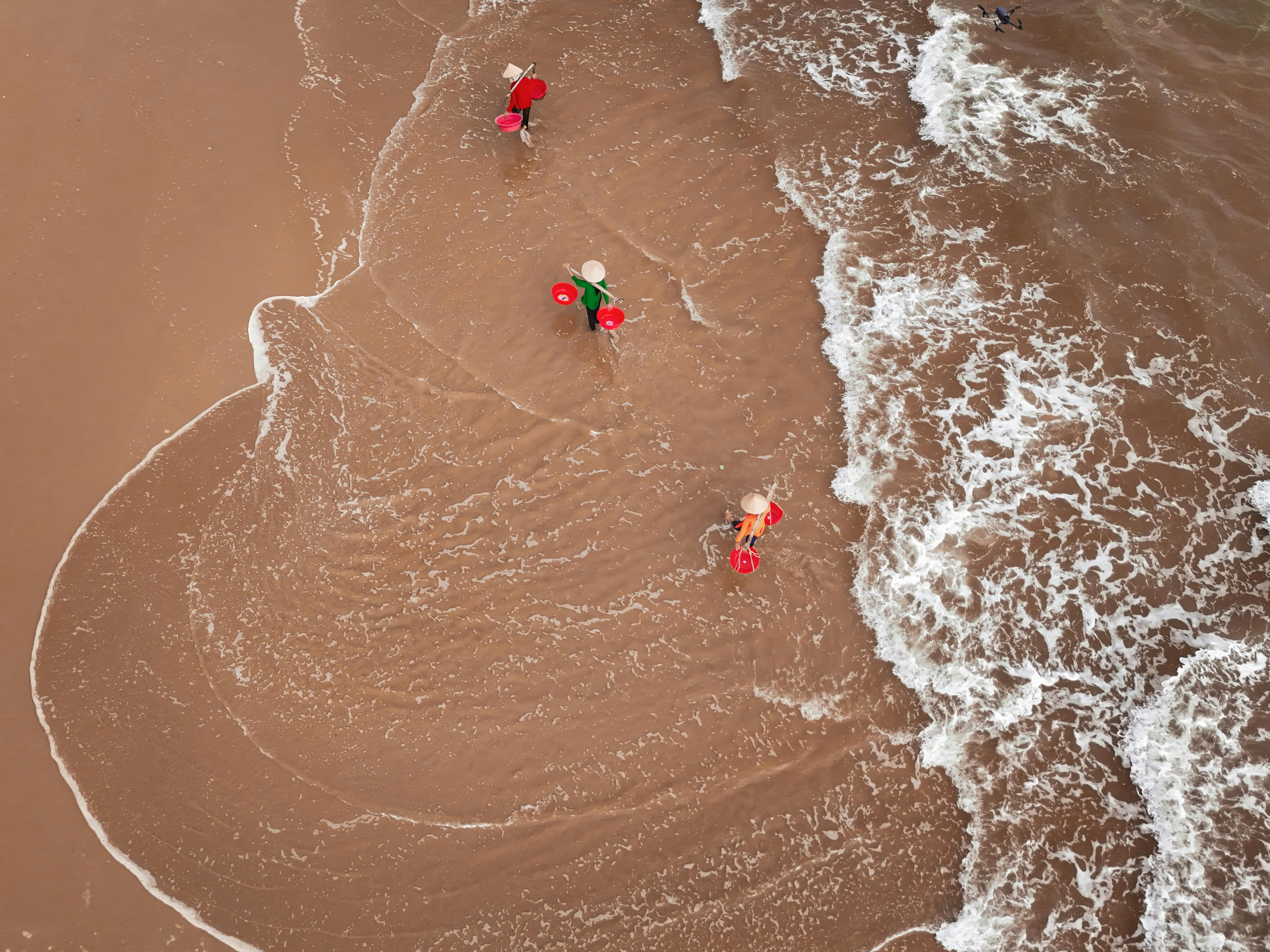
Discovering Hue’s Imperial Heritage
Start your Central Vietnam journey in Hue, the former imperial capital filled with history. Explore the grand Imperial Citadel, a UNESCO World Heritage Site where palaces, temples, and gates recall Vietnam’s last dynasty. The ornate Royal Tombs of emperors like Khai Dinh and Minh Mang showcase stunning architecture nestled in peaceful gardens.
A relaxing Perfume River cruise offers a charming view of the city, including the iconic Thien Mu Pagoda, one of Vietnam’s oldest religious sites. Spend at least two days here to soak in Hue’s culture and history fully.
Hoi An Ancient Town and Culinary Tours
Next, head south to Hoi An, an amazingly well-preserved ancient town famous for its lantern-lit streets, historic buildings, and riverside atmosphere. It’s a great spot for cultural immersion with its traditional markets, expert tailor shops, and the picturesque Japanese Covered Bridge.
Food lovers can enjoy culinary tours or cooking classes featuring local favorites like cao lau, white rose dumplings, and freshly baked banh mi. To see rural life, cycle through nearby rice paddies and vegetable villages to experience the countryside’s rhythms outside town.
Da Nang Beaches and Outdoor Activities
Da Nang brings a refreshing seaside vibe with sunny beaches like My Khe, perfect for relaxing and swimming. Outdoor enthusiasts will love the Marble Mountains with limestone caves, Buddhist shrines, and amazing views.
Don’t miss the spectacular Dragon Bridge that breathes fire and water on weekends, or the towering Lady Buddha statue gazing over the ocean. Adventure seekers can take a day trip to the Ba Na Hills to walk the iconic Golden Bridge, hike through lush forests, or explore the natural beauty of the Son Tra Peninsula.
Off the Beaten Path: Central Highlands and Countryside
If you’re looking for quieter, more cultural and natural experiences, head inland to the Central Highlands. Towns like Kon Tum and Pleiku offer ethnic minority villages, coffee plantations, and beautiful waterfalls.
Another gem is Phong Nha-Ke Bang National Park in Quang Binh, a UNESCO World Heritage site famous for caves including Son Doong—the world’s largest cave. History buffs will find the Vinh Moc tunnels near the DMZ deeply moving, showing the strength of Vietnamese people during the war.
There are plenty of eco-tourism options here, like boat rides through coconut groves and hikes with village guides sharing traditional lifestyles.
- Travel tip: The best time to visit Central Vietnam is February through August, with dry, sunny weather for most activities.
- Transport: Well connected by train, car, or private transfers for easy trips between places.
- Booking: Reserve tours ahead and check attraction hours, especially for UNESCO sites and popular spots.
South Vietnam Itinerary Highlights
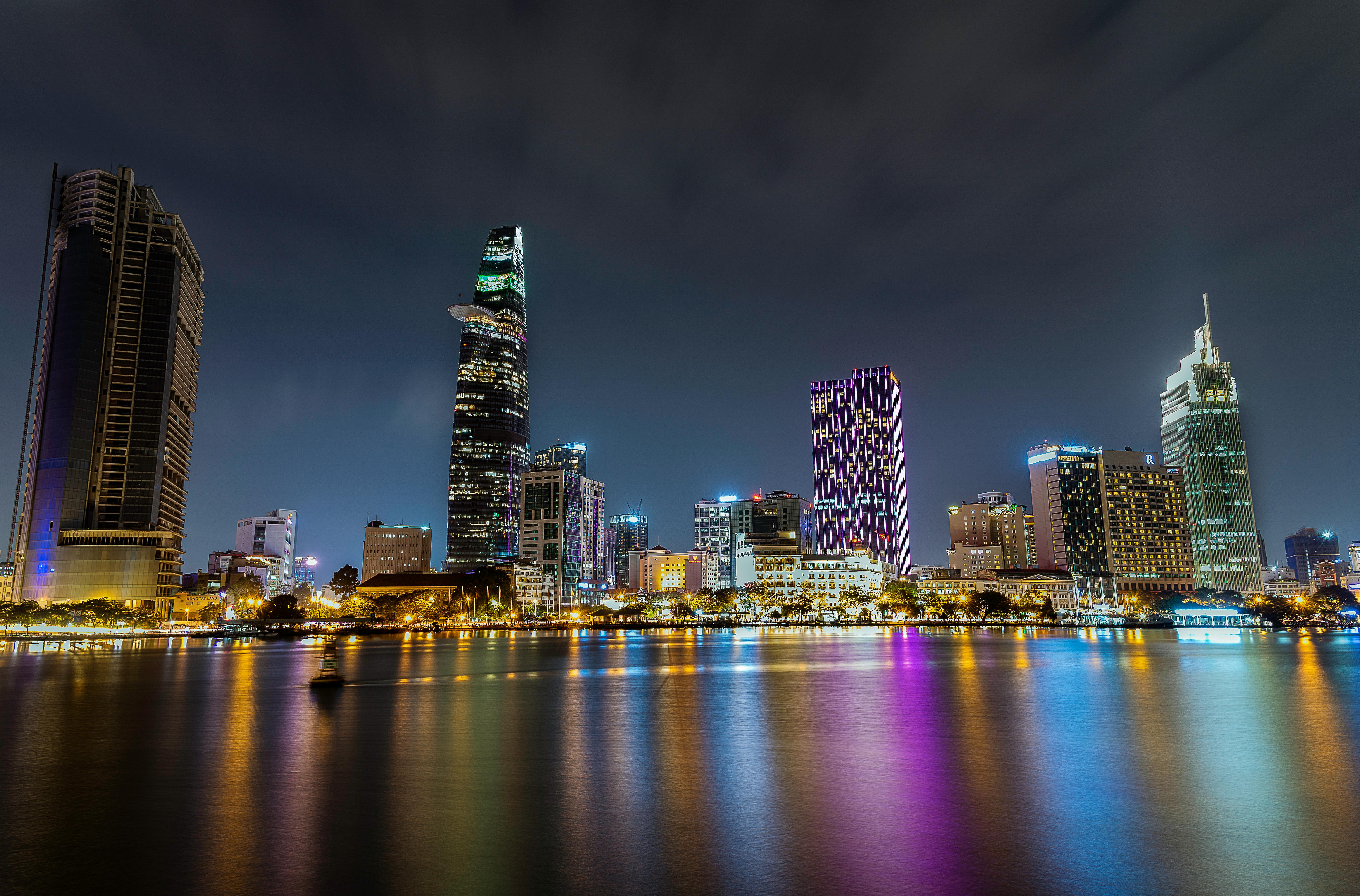
Ho Chi Minh City: Attractions and Nightlife
Ho Chi Minh City (formerly Saigon) pulses with energy and rich history. Key sights include the War Remnants Museum and Reunification Palace, both offering deep insights into Vietnam’s recent past. Enjoy the French colonial charm at the Notre-Dame Cathedral and Central Post Office, plus spiritual stops like the Jade Emperor Pagoda and Tan Dinh Church.
The lively Ben Thanh Market is great for shopping and street food, letting you sample local specialties.
At night, Bui Vien Street comes alive with bars, clubs, and street vendors. Rooftop bars like the one atop Bitexco Tower offer awesome city views and a fun place to relax.
Mekong Delta River Cruises and Villages
The Mekong Delta region slows things down with a more relaxed southern pace. Cruises around My Tho and Ben Tre drift through palm-lined canals visiting riverside villages known for crafts like coconut candy. The early-morning Cai Rang Floating Market in Can Tho is a bustling sight filled with trading boats overflowing with fresh produce.
You can cycle through rice paddies, visit workshops, or sample local eats like elephant ear fish. The Mekong offers rural life up close through river tours, village walks, and peaceful bike rides.
Phu Quoc Island and Coastal Retreats
Phu Quoc Island is famous for its white sandy beaches, clear turquoise water, and tasty fresh seafood. Popular activities include snorkeling, diving, and sunbathing, plus visits to local fish sauce farms and pepper plantations. Its Dinh Cau Night Market buzzes with food stalls and crafts as night falls.
For something quieter, the Con Dao Islands have secluded beaches and a fascinating history, perfect for reflection and connecting with nature. These coastal escapes balance beautifully with the southern cities’ bustle.
Cultural Experiences and Local Markets in the South
South Vietnam’s culture shows brightly in markets, food, and arts. Places like Ben Thanh Market offer crafts, street food, and fun conversations with vendors. Tasting southern favorites like bánh xèo (crispy pancake) and bún thịt nướng (vermicelli with grilled pork) is a must.
Visiting Mekong villages lets you see artisans making coconut candy, rice paper, and traditional music performances, giving you a glimpse beyond the usual tourist spots.
| Destination | Highlights | Recommended Stay | Top Activities |
|---|---|---|---|
| Ho Chi Minh City | Historic museums, colonial architecture, bustling markets | 2-3 days | City tours, nightlife, street food sampling |
| Mekong Delta | Boat cruises, floating markets, rural villages | 1-2 days | River tours, cycling, local workshops |
| Phu Quoc Island | Beaches, snorkeling, night markets | 2-4 days | Beach relaxation, diving, local farm visits |
Customizing Your Vietnam Travel Itinerary

Tailoring Itinerary Length: From Weekends to 3 Weeks
The length of your trip shapes what your Vietnam adventure looks like. With just a weekend, focus on one region—like Hanoi and nearby Ninh Binh for culture and nature, or Ho Chi Minh City for a compact city and food tour.
If you have 7 to 10 days, mix two or three main areas such as Hanoi, Ha Long Bay, and Hoi An, or Ho Chi Minh City, Mekong Delta, and Phu Quoc Island.
With 2 to 3 weeks, you can travel the full length of Vietnam, blending iconic sights with hidden gems for a full experience.
Mixing Must-See Landmarks with Emerging Destinations
For a richer trip, balance your itinerary with classic landmarks and up-and-coming spots. Iconic places include the Old Quarter in Hanoi, Ha Long Bay, Hoi An Ancient Town, and the Mekong Delta. Emerging treasures like the Ha Giang Loop’s rugged mountains, Phong Nha-Ke Bang National Park’s caves, Cat Ba Island, and Ba Be National Park offer authentic, less touristy vibes. This combo gives you both world-famous beauties and genuine local culture.
| Classic Attractions | Emerging Destinations |
|---|---|
| Hanoi Old Quarter, Ha Long Bay | Ha Giang Loop, Phong Nha-Ke Bang National Park |
| Hoi An Ancient Town, Hue Imperial City | Con Dao Islands, Mui Ne Sand Dunes |
| Ho Chi Minh City, Mekong Delta Floating Markets | Ninh Binh, Ba Be National Park |
| Sapa (ethnic villages, rice terraces) | Cat Ba Island, Quy Nhon |
Incorporating Eco-Tourism and Sustainable Travel
Vietnam’s natural beauty is gaining attention with growing eco-tourism. Check out places like Phong Nha-Ke Bang National Park for eco-friendly cave tours and jungle treks. Stay in local-led homestays and hike rice fields in spots like Pu Luong and Mai Chau. Near Ho Chi Minh City, the Can Gio Biosphere Reserve offers mangrove tours that support conservation.
Picking eco-friendly operators helps communities thrive and keeps these natural treasures safe for future travelers.
Family-Friendly and Adventure Travel Options
Traveling with kids? Add fun stuff like traditional water puppet shows in Hanoi, lantern-making workshops in Hoi An, and amusement parks like Vinpearl Land in Nha Trang. Adventure fans will enjoy trekking in Sapa and Ha Giang, caving in Phong Nha, sandboarding in Mui Ne, and kitesurfing along the coast.
Mix learning at places like the War Remnants Museum in Ho Chi Minh City with outdoor thrills for a well-rounded family trip.
- Make the most of your time: Use overnight trains or flights to save daytime for exploring.
- Dodge crowds: Visit popular spots early or during shoulder seasons (March–May, September–November).
- Dive deeper into culture: Choose homestays and guided tours in remote areas for real local experiences.
By customizing your Vietnam itinerary with the right trip length, a good mix of destinations, eco-tourism, and family or adventure options, you’ll create an unforgettable journey just for you.
Vietnam Food and Cultural Experiences

Famous Vietnamese Dishes and Where to Try Them
Vietnamese food is loved for its fresh ingredients, balanced flavors, and traditions. Don’t miss these dishes:
- Phở: Fragrant rice noodle soup with beef (phở bò) or chicken (phở gà), fresh herbs, and lime. The classic northern style shines in Hanoi.
- Bánh mì: Crispy French-style baguette sandwich filled with pork, pâté, pickled veggies, and herbs, especially popular in Ho Chi Minh City.
- Gỏi cuốn (Spring Rolls): Fresh rolls packed with shrimp, pork, and herbs, loved throughout southern Vietnam.
- Bún chả: Grilled pork served with rice noodles and herbs, a Hanoi lunch favorite.
- Bánh xèo: Crispy savory pancakes with pork and shrimp, common in central and southern regions.
Vietnamese food culture often involves sharing meals and distinct regional flavors—north, central, and south. Food tours in Hanoi, Ho Chi Minh City, and Hoi An offer tastings and fun stories about ingredients and cooking.
| Dish | Description | Best Region |
|---|---|---|
| Phở | Aromatic noodle soup with beef or chicken | Hanoi |
| Bánh mì | Vietnamese sandwich on baguette | Ho Chi Minh City |
| Gỏi cuốn | Fresh spring rolls | Southern Vietnam |
| Bún chả | Grilled pork with noodles | Hanoi |
| Bánh xèo | Crispy savory pancakes | Central/Southern Vietnam |
Make Sure to check out our food guide: A Culinary Journey Through Vietnam: Discover Authentic Flavors, Street Food, and Dining Culture
Street Food Tours and Markets
Vietnam’s lively food scene shines in street food tours and busy markets. These tours mix tasting with cultural insights.
- Ho Chi Minh City: Motorbike tours zip through streets trying dishes like bánh xèo and bánh khọt while learning about local herbs and sauces. Walking or taxi tours are good alternatives if you prefer less adventure.
- Hanoi: Tours often start at Dong Xuan Market, a hub of seafood, spices, and fresh produce, combining staples like pho and bánh cuốn with exploring the Old Quarter.
- Hoi An and Da Nang: Night tours highlight dishes like Cao Lau and Mì Quảng in Hoi An, with motorbike rides in Da Nang showing regional flavors.
Markets burst with local color where you can meet vendors and savor authentic fresh food. Tour prices usually range from $30 to $40 USD but can be adjusted for comfort levels.
Traditional Festivals and Cultural Events
Vietnam’s festivals offer rich cultural experiences that blend history, food, and social fun:
- Tết Nguyên Đán (Lunar New Year): The biggest holiday, with family reunions, ancestor rites, and festive dishes like Bánh Chưng (sticky rice cake) and Thịt Kho Tàu (caramelized pork).
- Mid-Autumn Festival: Family-focused, famous for lantern displays and mooncakes with tea.
- Hùng Kings Festival: Honoring Vietnam’s legendary founders with temple ceremonies in Phú Thọ Province.
- Huế Festival: A colorful celebration of music, dance, and parades held every few years in historic Huế.
- Phu Giây and Xen Xo Phon Festivals: Regional events featuring traditional music, costumes, and rituals.
Going to these festivals gives you a peek into Vietnam’s community spirit, ethnic diversity, and seasonal culinary treats for a truly rich cultural visit.
Engaging with Local Communities
Getting to know locals through food and culture makes your Vietnam trip more meaningful:
- Shared meals: Food is often a family-style affair, building social bonds whether at home or on the street.
- Homestays and immersion: Staying in villages like Tân Hoa lets you live, cook, and learn with Vietnamese families, experiencing traditions firsthand.
- Joining markets and festivals: Taking part in local events offers glimpses of daily life and customs.
Respecting local etiquette, like sharing dishes and hospitality, makes these interactions deeper. Ethical travel supports communities and helps preserve heritage.
Travel Logistics and Transportation in Vietnam
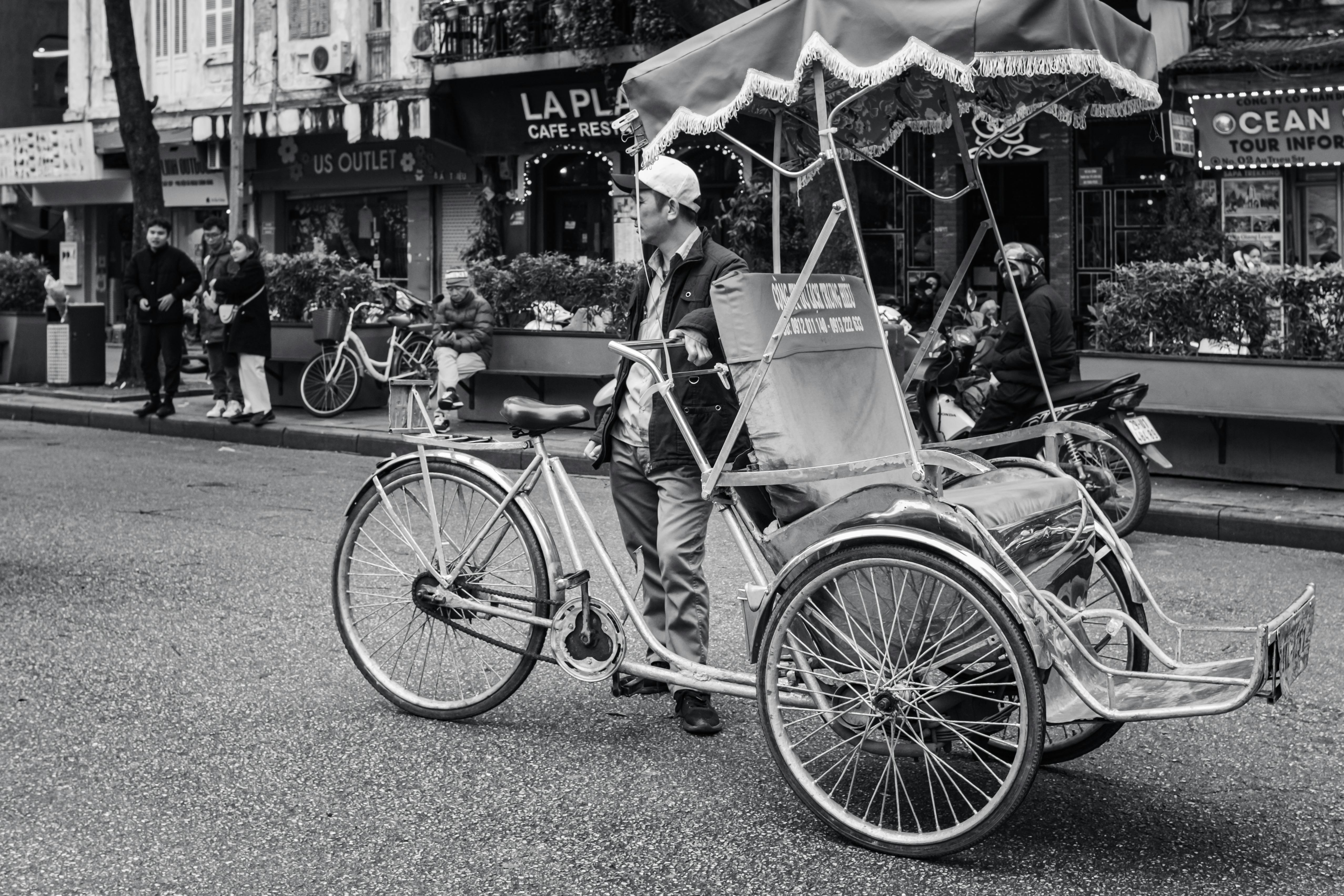
Getting Around: Flights, Trains, and Buses
Flights are the quickest way to cover Vietnam’s long distances. Hanoi, Ho Chi Minh City, and Da Nang are key hubs served by many airlines. Booking flights early, especially during holidays and peak seasons, gets you better prices. Sites like 12go.Asia make it easy to compare and book.
Trains offer scenic, comfy travel great for countryside views. The Reunification Express runs between Hanoi and Ho Chi Minh City, stopping at various spots. You can choose soft or hard seats, plus sleeper cabins with 4- or 6-berth options. Night trains save on lodgings and time, and some tourist-focused ones have upgrades.
Buses cover cities and towns affordably with options from regular day buses to sleeper and VIP “limousine” buses with extras. Night buses help save daytime for exploring and budget. City buses, shuttles, taxis, motorbike taxis, and ride-hailing apps offer easy local rides.
Airport transfers are available by express train, shuttle bus, taxi, and ride-sharing—pick what fits your budget and convenience.
Accommodation Options for Every Budget
Budget travelers can find lots of hostels and guesthouses, great for backpackers and solo adventurers.
Mid-range places include 2-3 star hotels, cozy boutique lodgings, and comfortable homestays offering good value and amenities.
Luxury stays abound in cities and beach resorts, with famous international hotels and upscale resorts for those wanting the best.
Booking platforms like Booking.com and Agoda offer real-time reviews and exclusive deals to help you find the perfect spot.
Tips for Booking Tours and Activities
Reputable tour companies bundle transport, lodging, and activities, making travel hassle-free—especially if it’s your first trip or you don’t know the local language.
Book tours and trips 3-4 months ahead during peak times to lock in availability and better prices.
If you prefer going solo, apps like 12go.Asia help compare transport and check online reviews for trusted local tour providers.
Mobile Connectivity and Travel Apps
Local SIM cards are cheap and easy to buy at airports, mobile shops, or convenience stores, offering solid 4G coverage nationwide.
Handy travel apps include:
– Transport & tickets: 12go.Asia, Grab (ride-hailing), Xe Xanh App
– Accommodation: Booking.com, Agoda, Airbnb
– Navigation: Google Maps
– Language help: Google Translate
– Food & local tips: Grab, Foody, Beamin
– Payments: MoMo, ZaloPay for easy digital transactions
Most support English, making your trip smoother and more fun.
Key Tips and Caveats
- Book transport and lodging early during holidays and peak seasons to avoid sold-out places or price spikes.
- Stick to verified reviews and trusted providers to dodge common scams.
- Train rides, while slower than planes or buses, are scenic and safer.
- Airport transfer options vary widely—choose one that matches your budget and needs.
- Hotel and local staff can be a great help with bookings and travel questions, especially if you don’t speak Vietnamese.
Safety Tips and Travel Checklists
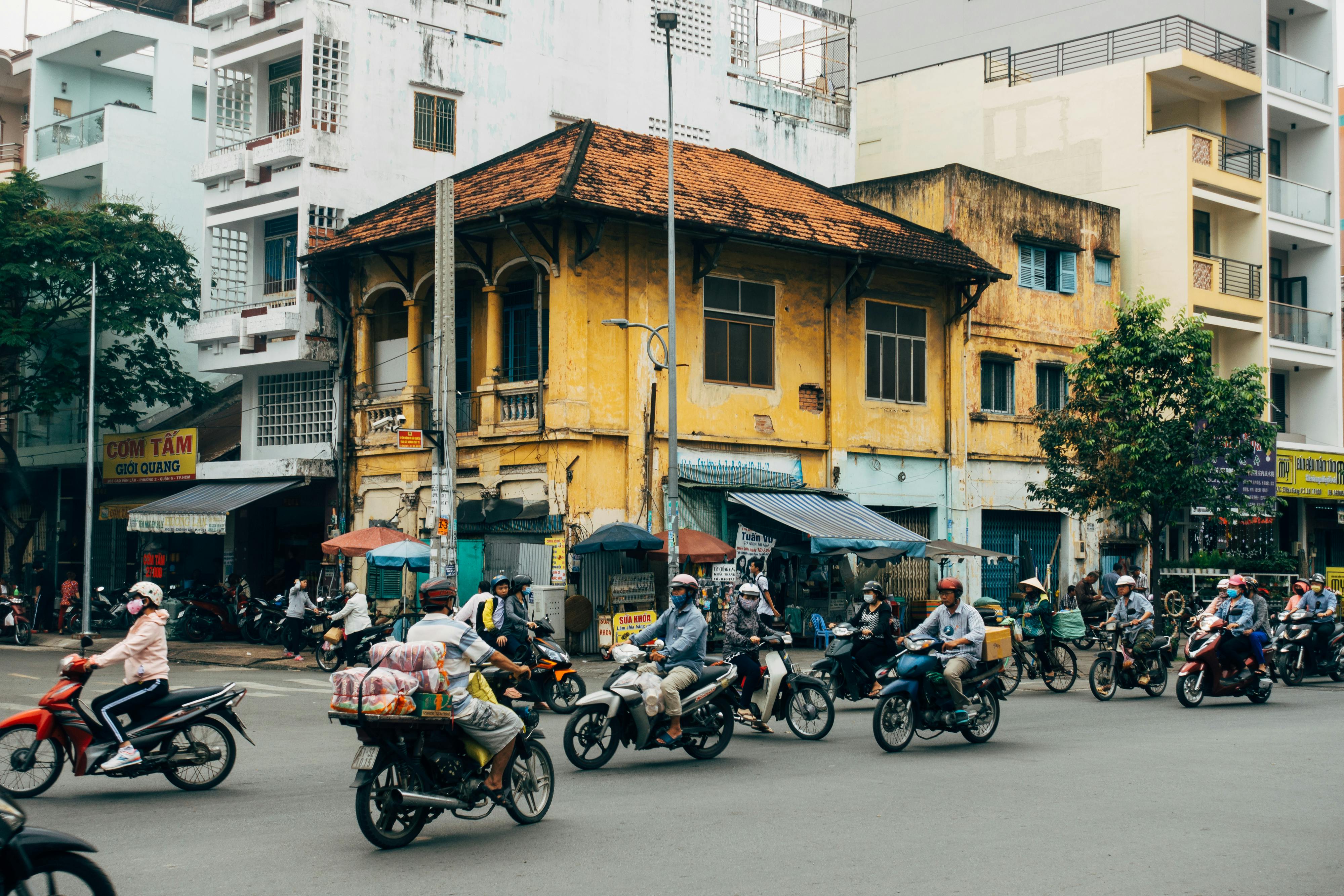
Staying Safe in Cities and Rural Areas
In busy cities like Hanoi and Ho Chi Minh City, traffic might surprise you. When crossing streets, walk steadily and don’t make sudden moves, since vehicles weave rather than stop for pedestrians. Always wear a helmet if you ride motorbikes.
Pickpocketing is common in crowded markets and public transport. Keep bags zipped and in front of you. Avoid showing your phone openly on the street to prevent snatch theft. Use hotel safes for valuables when you can.
Cross-body bags with secure zippers are best. Don’t keep wallets or phones in back pockets. Rural areas are generally safer but stay alert in crowded markets or bus stations, especially after dark.
Health Precautions and Emergency Contacts
Make sure your vaccinations are current and pack needed meds. Stick to cooked food at busy places and drink only bottled or boiled water—even for brushing teeth.
Carry a small first-aid kit and buy medicine from trustworthy pharmacies like Pharmacity or Long Chau. Agree on prices before ordering street food to avoid surprises.
Save emergency numbers on your phone:
Police: 113
Fire: 114
Ambulance: 115
Since operators may speak limited English, keep your location written down to help responders find you.
Important Travel Documents to Carry
Keep photocopies or digital backups of your passport and visa separate from the originals, which should stay safely locked in hotel safes when possible.
If renting motorbikes, bring a valid international driving permit. Always carry proof of travel insurance covering health and accidents, along with emergency contacts including your embassy.
Common Scams and How to Avoid Them
| Scam Type | How It Works | How to Avoid |
|---|---|---|
| Overcharging | Inflated bills or extra costs for unexpected services | Check prices beforehand, ask for itemized bills, count your change carefully |
| Pickpocketing | Theft in crowded spots like markets and buses | Use anti-theft bags, keep valuables hidden or in hotel safes |
| Fake Taxis | Unlicensed taxis that overcharge or take longer routes | Use reputable taxi companies or trusted ride apps |
| Product Switching | Swapping good items for cheaper ones without telling you | Inspect goods carefully and shop at trusted places |
| Drink Spiking | Drinks tampered with in bars or clubs | Watch your drink at all times and refuse drinks from strangers |
| Job/Service Scams | Fake offers targeting tourists | Book tours and lodgings only through reliable agencies |
Extra tips: Download maps and translation apps before you go, dress modestly at temples by covering shoulders and knees, and learn a few Vietnamese phrases for emergencies. Keep an eye on official travel advisories for safety updates.
Frequently Asked Questions About Traveling in Vietnam

How Many Days Should I Spend in Vietnam?
You’ll want at least 10 days to comfortably see Vietnam’s main highlights. A two-week (14-day) trip covers north, central, and south regions well. Shorter visits (7-8 days) focus on just a few cities or regions, while longer stays (15-21+ days) allow deeper cultural immersions and off-the-beaten-path adventures.
Is It Safe to Travel in Vietnam?
Vietnam is generally a safe destination for travelers. Just use normal travel smarts: guard your valuables, take reputable transport, and be aware of common scams.
Do I Need a Visa for Vietnam?
Visa rules depend on your nationality. Some travelers get visa exemptions (often up to 15 days), but most need a 30-day tourist visa. Always check current requirements before you travel because policies can change.
What Are Must-Visit Places in Vietnam?
If it’s your first trip, key spots include:
- Hanoi—historic capital with lively culture and street food
- Ha Long Bay—UNESCO site known for dramatic limestone islands
- Hue—ancient capital with imperial citadel
- Hoi An—well-preserved historic town famous for its lanterns
- Ho Chi Minh City (Saigon)—dynamic city rich in war history
- Mekong Delta—floating markets and river life
Extended trips might add:
- Sapa or Ha Giang for mountain views and ethnic villages
- Phong Nha-Ke Bang National Park for cave adventures
- Phu Quoc or Da Nang for beach relaxation
How to Plan a Budget Trip to Vietnam?
Vietnam is one of Southeast Asia’s most affordable countries. Budget tips include:
- Stay: Guesthouses and hostels can start at $12 a night.
- Eat: Street meals usually cost $2–$3 each.
- Travel: Buses and trains are cheap ways to get around; overnight buses save lodging costs.
- Attractions: Many cultural sites have low or no entry fees.
- SIM cards & internet: Easy and cheap to buy locally upon arrival.
Extra tips:
- English is common in tourist areas, but translation apps help with communication.
- Plan your route smartly to avoid backtracking and focus on your must-see spots depending on your interests and pace.
Wrapping Up
Planning your ideal Vietnam travel itinerary for 2025 just got simpler with this complete guide. By exploring Vietnam’s three distinct regions—from Hanoi and Hue’s rich culture to Ho Chi Minh City’s lively energy and the amazing natural sights of Ha Long Bay and the Mekong Delta—you can tailor your trip perfectly to your interests, schedule, and travel vibe. Whether you love historic sites, breathtaking nature, authentic food, or thrilling adventures, this guide has practical tips on logistics, safety, and budgeting to keep your journey smooth and memorable.
Don’t forget to personalize your itinerary by mixing famous landmarks with hidden gems, and think about eco-tourism or family-friendly activities to deepen your connection with Vietnam’s culture and environment. Start planning early, stay flexible with the weather, and soak in the warmth of Vietnam’s people for an unforgettable experience. Ready to explore? Use the downloadable checklists and itinerary templates here to confidently map out your trip and dive into the amazing wonders of Vietnam in 2025!
- Key Takeaways
- Introduction to Your Vietnam Travel Itinerary
- Planning Your Vietnam Trip: Essential Steps
- Best Time to Visit Vietnam: Seasonal and Weather Guide
- North Vietnam Itinerary Highlights
- Central Vietnam Travel Itinerary
- South Vietnam Itinerary Highlights
- Customizing Your Vietnam Travel Itinerary
- Vietnam Food and Cultural Experiences
- Travel Logistics and Transportation in Vietnam
- Safety Tips and Travel Checklists
- Frequently Asked Questions About Traveling in Vietnam
- Wrapping Up
Get your FREE Monstera Art download
Join our WanderLife Studios mailing list to get updates about our work and be the first to know about upcoming art products.
As a Thank You Gift, you will get this wonderful hand-drawn Monstera Line Art as a digital download for FREE .
